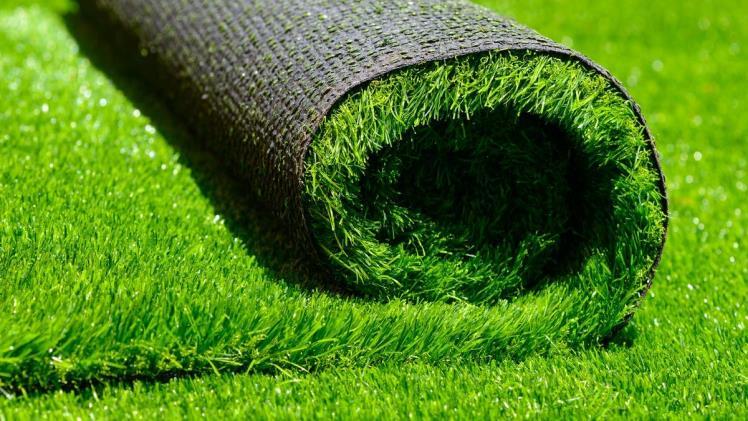A lush, green lawn is the pride of any homeowner, a visual testament to their dedication and care. However, achieving and maintaining that perfect expanse of turf requires more than just occasional mowing. Understanding the essential aspects of turf care, from soil preparation to pest control, is key to ensuring a healthy, vibrant lawn. Here’s a comprehensive guide to caring for turf.
Soil Preparation and Testing
The foundation of a healthy lawn begins with the soil. Proper soil preparation ensures that the turf has the best possible environment to grow. Start by testing the soil’s pH levels, which should ideally be between 6.0 and 7.0 for most grass types. Soil testing kits are available at garden centers, or you can send a sample to a local agricultural extension service for analysis.
Based on the test results, amend the soil accordingly. If the pH is too low (acidic), add lime to raise it. If it’s too high (alkaline), sulfur can help lower it. Incorporate organic matter, such as compost or well-rotted manure, to improve soil structure, drainage, and nutrient content. Proper soil preparation sets the stage for robust root development and overall lawn health.
Choosing the Right Grass
Selecting the appropriate grass species for your climate, soil type, and intended use is crucial. Cool-season grasses, like Kentucky bluegrass and fescue, thrive in temperate regions, while warm-season grasses, such as Bermuda and Zoysia, are better suited to hotter climates. Consider the lawn’s purpose—whether it’s a play area, ornamental lawn, or a multifunctional space—to choose the grass that will best meet your needs.
Seeding and Sodding
Establishing a new lawn can be done through seeding or sodding. Seeding is cost-effective and allows for a greater variety of grass types. However, it requires more time and effort to establish. Prepare the soil by tilling and raking it smooth, then spread the seeds evenly. Lightly rake the soil again to cover the seeds, and water gently but thoroughly.
Sodding provides an instant lawn and is less prone to erosion and weed invasion. Lay sod strips in a staggered, brick-like pattern to avoid visible seams. Press the edges together tightly, and water immediately to help the sod take root. Both methods require consistent watering until the grass is well established.
Watering
Proper watering is crucial for turf health. The key is to water deeply and infrequently rather than shallowly and often. This encourages deep root growth, making the grass more drought-resistant. Water early in the morning to minimize evaporation and fungal growth. Aim for about 1 to 1.5 inches of water per week, either from rainfall or irrigation, adjusting for seasonal needs and soil type.
Mowing
Regular mowing helps maintain turf density and prevents weeds. Set your mower blades to the appropriate height for your grass type—usually around 2.5 to 3.5 inches for cool-season grasses and 1 to 2 inches for warm-season grasses. Never remove more than one-third of the grass blade length in a single mowing, as cutting too short can stress the grass and reduce its ability to photosynthesize.
Fertilization
Feeding your lawn with the right nutrients at the right times is essential for maintaining its health. Use a balanced, slow-release fertilizer formulated for your grass type. Apply fertilizer in early spring and fall for cool-season grasses, and in late spring and summer for warm-season grasses. Avoid over-fertilizing, as this can lead to excessive growth and increased susceptibility to disease.
Weed Control
Weeds compete with grass for nutrients, water, and light. Implement a proactive weed control strategy that includes both pre-emergent and post-emergent herbicides. Pre-emergent herbicides prevent weed seeds from germinating, while post-emergent herbicides target existing weeds. Manual weeding can also be effective, especially for isolated patches.
Pest and Disease Management
Regularly inspect your lawn for signs of pests and diseases. Common pests include grubs, which feed on grass roots, and chinch bugs, which suck sap from grass blades. If you notice brown patches, thinning grass, or other signs of trouble, identify the pest or disease and treat accordingly. Natural predators, proper lawn care practices, and targeted insecticides or fungicides can help manage these issues.
Aeration
Aerating your lawn once or twice a year helps alleviate soil compaction and improves air, water, and nutrient penetration. Use a core aerator to remove small plugs of soil, allowing the roots to breathe and grow more effectively. Early spring or fall is the best time for aeration, depending on your grass type.
Caring for turf requires a combination of knowledge, patience, and regular maintenance. By preparing the soil, choosing the right grass, and following best practices for watering, mowing, fertilizing, and pest control, you can achieve a healthy, beautiful lawn. A well-maintained turf not only enhances the aesthetic appeal of your property but also provides a resilient and sustainable outdoor space for years to come.
If you’re looking to buy turf gold coast, check out Albert Valley Turf.

